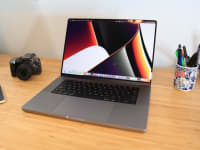MacBook Pro 14 vs MacBook Pro 16: Which one should you buy?
Both laptops are nearly identical, but one has a better value.
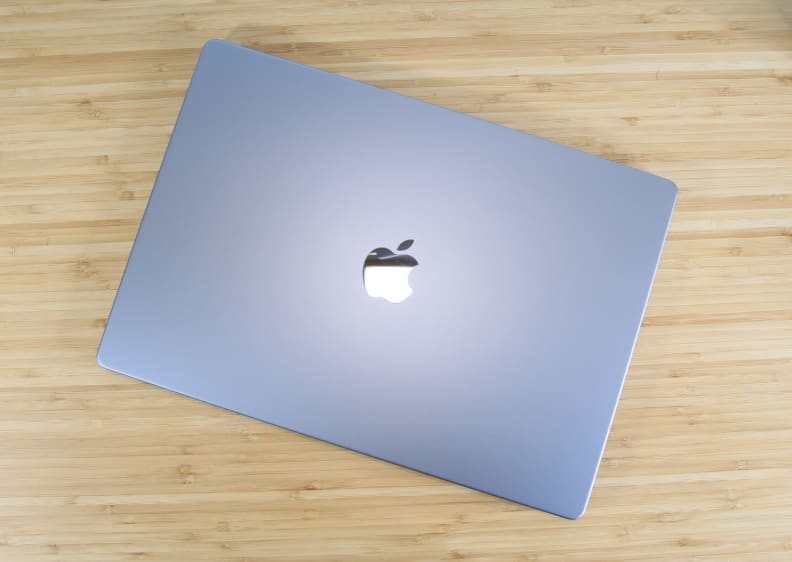 Credit:
Reviewed / Matthew S. Smith
Credit:
Reviewed / Matthew S. Smith
Products are chosen independently by our editors. Purchases made through our links may earn us a commission.
Two laptops, both alike in dignity, in your online shopping cart, where we lay our scene: MacBook v MacBook.
In all seriousness though, Apple’s newest MacBook Pro 14 and MacBook Pro 16 provide nearly all of the same benefits: same display type, the same number of and types of connectivity ports, same keyboard, the same pick of hardware components. So how do you choose between the two when they are equally stellar laptops? We go over all of that, including a few key differences, below.
Performance
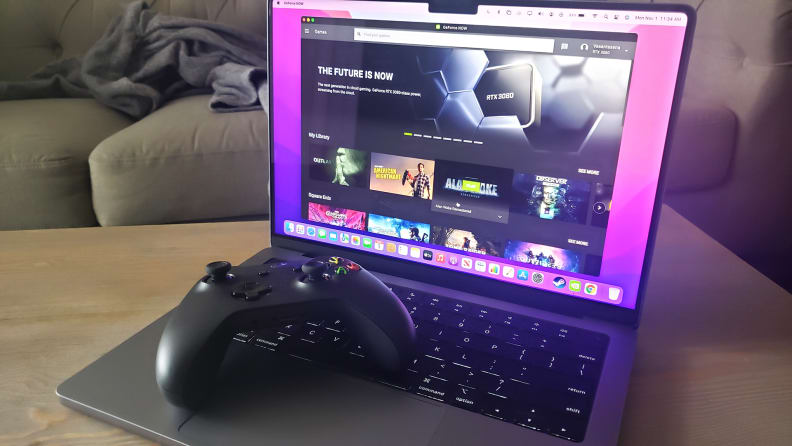
Even though the integrated GPU is powerful enough to play games locally, the list of good titles on macOS is slim. But the 14-inch MacBook Pro is a great cloud gaming laptop.
Both of the newest 14-inch and 16-inch MacBook Pros have configurations that include Apple’s M1 Pro and M1 Max chips, so technically speaking it’s possible to get the same computing performance out of both. Each chip has a different number of CPU cores and GPU cores.
The MacBook Pro 14 comes standard with an M1 Pro chip that has either an 8-core CPU and 14-core GPU, a 10-core CPU and 14-core GPU, or a 10-core CPU and 16-core GPU.
The MacBook Pro 16 comes with either the most powerful M1 Pro chip (10-core CPU and 16-core GPU) or an M1 Max chip with either a 10-core CPU and 24-core GPU, or a 10-core CPU and a 32-core GPU. But, here's the rub: you can also configure the 14-inch MacBook Pro with the same M1 Max chips. The only chip you can’t put in a 16-inch MacBook Pro is the base M1 Pro.
If you’re looking at all those core counts and thinking, “What does it all mean?”, here’s a simple way to look at it: more cores mean more power. Ten cores will have more total processing power than eight, for instance. There won’t be a major difference in everyday tasks like web browsing, but in tasks like video transcoding, those extra cores will make the process go faster, even if it’s by seconds instead of minutes.
You’ll see a much larger difference in graphics processing between the 16, 24, and 32-core GPU options. So much so that the highest-end M1 Max chip can handle modern video games with the help of an external graphics card.
For example, as we saw in our MacBook Pro 14 and MacBook Pro 16 testing, you’ll get an average of 42 frames per second in Shadow of the Tomb Raider with a 16-core GPU, but an average of 85fps with a 32-core GPU—double the cores, double the performance. That’s at 1080p on the highest graphics preset, too.
Ultimately, if we compare the base MacBook Pro 14 to the base MacBook Pro 16, the 16-inch laptop will be faster because its chip has more CPU and GPU cores. But considering you can get the same performance out of each laptop if they are configured the same, one MacBook is not better than the other in this category.
Our pick: Tie
Portability
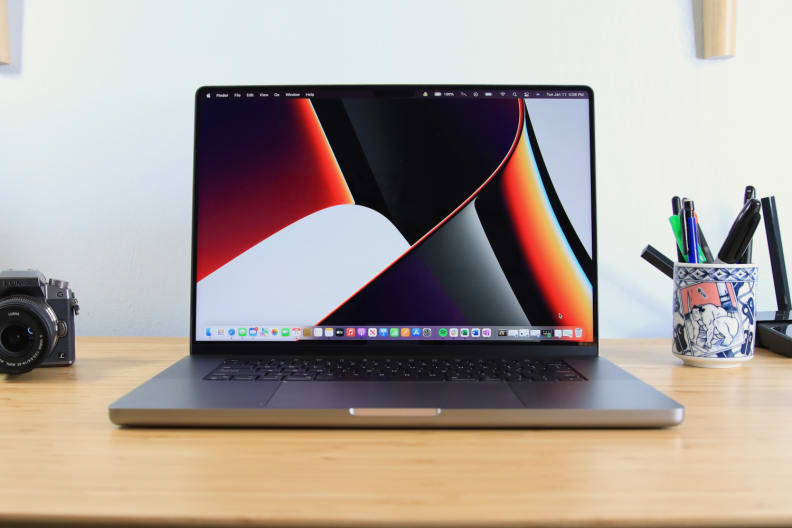
Nearly everything about Apple's MacBook Pro 16 M1 Max blew us away.
This is cut and dry: the MacBook Pro 14 is a smaller laptop, so of course, it’s the most portable. Its smaller size means it weighs less than the 16-inch too—3.5 pounds versus 4.8 pounds. The MacBook Pro 14 also has a smaller power adapter that’s square-shaped while the MacBook Pro 16’s power adapter is rectangular, so if you do need to pack the charger with the laptop in your bag, you’ll have a tad more space with the 14-inch model.
Our pick: MacBook Pro 14
Features
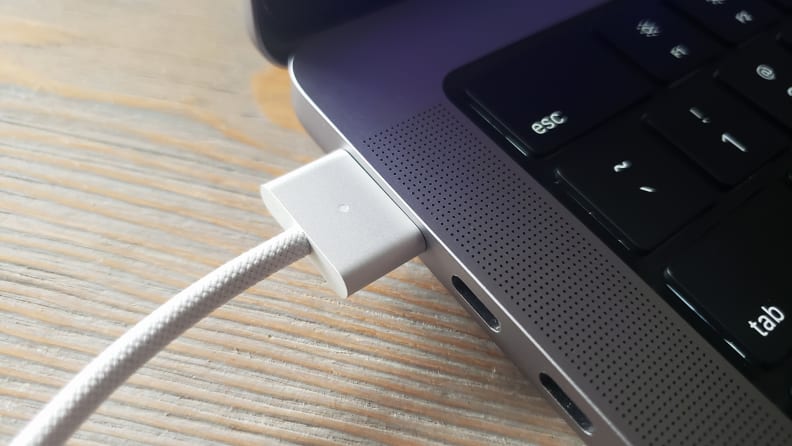
MagSafe is back on the MacBook Pro!
Again, these MacBook Pro models are Apple’s higher-end laptops, so they come with better features than cheaper models, like more ports, better battery life, and a Liquid Retina XDR display. In fact, both MacBook Pro models have exactly the same basic features.
Both have three Thunderbolt 4 ports, one HDMI port, one SDXC card slot, and MagSafe 3 port for charging. Both have a Magic Keyboard with Touch ID, a Force Touch trackpad, and the same Liquid Retina XDR display with a maximum resolution of 2732 x 2048p and a pixel density of 264 ppi. The display can also support HDR content up to 1000 nits brightness.
However, the MacBook Pro 16 has much better battery life than the Pro 14. In our basic battery test, the MacBook Pro 14’s battery lasted for ten hours and 25 minutes, while the Pro 16 lasted for an incredible 22 hours and 32 minutes. If you need a laptop for video editing or other power-hungry tasks, you’re going to want the larger battery, especially if you accidentally forget your power adapter at home on your way to work or school.
Our pick: MacBook Pro 16
Price
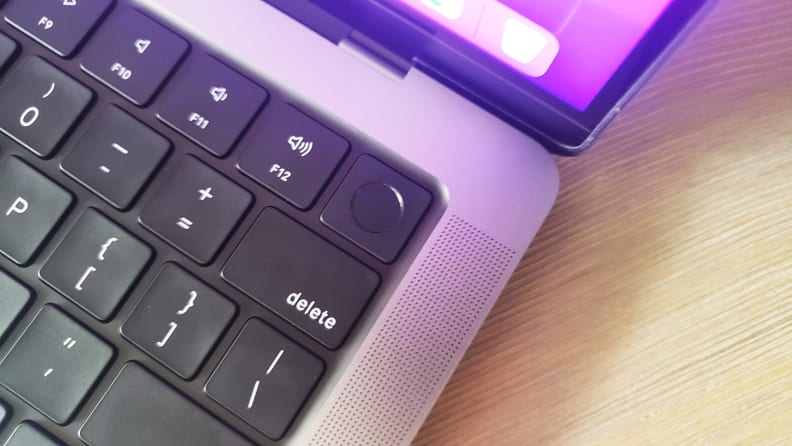
The 14-inch MacBook Pro replaced the tiny fingerprint reader with a larger square, concave key.
Here’s where things get a little tricky. Since you can change the laptop configuration by choosing what chip, amount of memory and storage, and other add-ons you want in your MacBook Pro, it’s very easy to spend thousands of dollars on either the Pro 14 or Pro 16. So for the sake of argument, let’s look at the base models of both laptops.
The base MacBook Pro 14 costs $1,999, while the base MacBook Pro 16 costs $2,499. Could you opt for the Pro 14, upgrade it with nearly everything the Pro 16 does, and save money? Absolutely. If you upgrade the chip in the Pro 14 to the base chip in the Pro 16 (the M1 Pro with a 10-core CPU and 16-core GPU), that will bring the cost of the Pro 14 to $2,299—$100 less than the Pro 16.
Both the Pro 14 and Pro 16 can be configured with up to 64GB of memory (if you opt for an M1 Max chip) and up to 8TB of storage. Both base laptop models come with 512GB of storage and 16GB of memory, and it costs the same to upgrade either of those components.
If you were to go with either of the M1 Max chips in the MacBook Pro 14, you’d still save money. Adding the M1 Max with a 10-core CPU and a 24-core GPU to the Pro 14 brings the cost to $2,899, where a Pro 16 configured with the same chip is $3,099, or $200 more—and the top-of-the-line M1 Max chip brings the total cost of the Pro 14 to $3,099, while the Pro 16 is $3,299.
The only thing you’ll miss out on is a larger display and a longer battery life, but for most people, a 14-inch display is a perfect size and ten and a half hours of battery life is plenty.
Our pick: MacBook Pro 14
And the winner is…
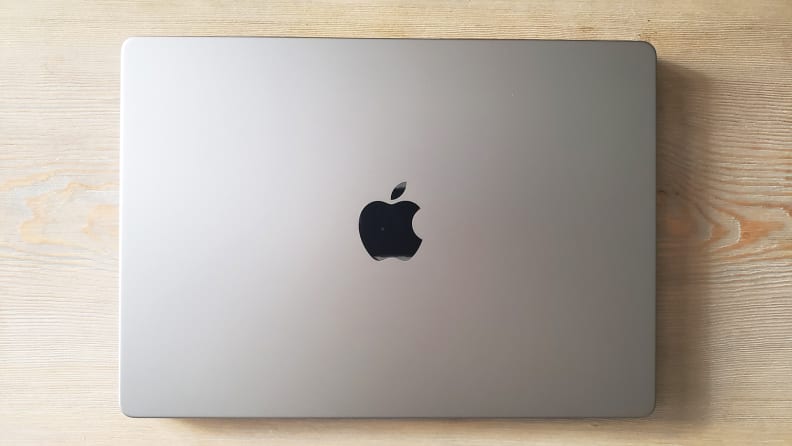
The MacBook Pro 14-inch M1 Pro is best suited for anyone who does light to moderate photo or video editing work on a regular basis.
While there is no doubt both the MacBook Pro 14 and MacBook Pro 16 are excellent laptops, the Pro 14 can be configured to offer very similar performance (apart from battery life) and nearly all the same features as the Pro 16 and still be $100 or $200 dollars cheaper. If you do a lot of video work or 3D rendering, you might want the MacBook with a larger display and longer battery life, but for most people, a 14-inch screen will be fine.
Also keep in mind that the MacBook Pro 16 does not offer the base M1 Pro chip (8-core CPU, 14-core GPU) as an option. So if you were hoping to get a larger display with better battery life and bring the overall cost down by getting a less powerful chip, you are out of luck. You can’t even get the second most powerful M1 Pro chip in the MacBook Pro 16.

